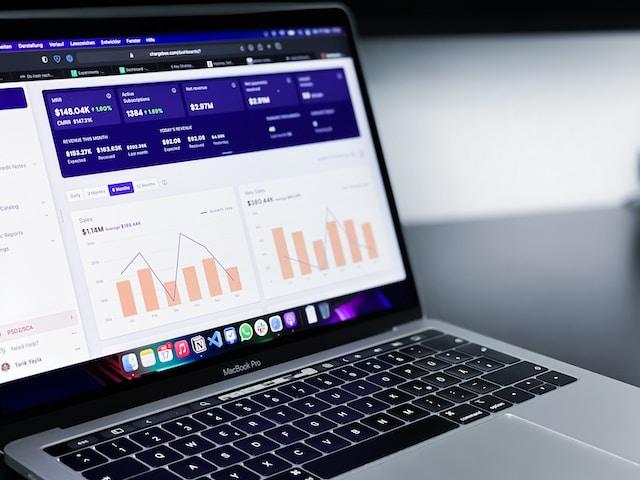Exploring 8 Business Analytics Data Collection Methods
In the rapidly evolving landscape of business, data is the key to informed decision-making. Business analytics, the systematic computational data analysis, plays a pivotal role in providing valuable insights that drive strategic choices. To harness the power of analytics, businesses employ various data collection methods.
Below, we covered eight essential business analytics data collection techniques, shedding light on how these methods gather the raw material that fuels intelligent business strategies.
- Surveys and Questionnaires:
Surveys and questionnaires are sophisticated tools when designed with precision. They can unearth not only what customers want but why they want it, delving into the motivations behind their preferences. Employ stratified sampling techniques to ensure a diverse respondent pool, capturing a comprehensive view of different demographic segments.
Utilizing open-ended questions alongside closed ones allows respondents to express nuanced opinions, providing qualitative depth and uncovering insights that quantitative data might miss. Furthermore, employing machine learning algorithms can automate the analysis of large-scale survey data, saving time and offering real-time insights. These algorithms can identify complex patterns within responses, offering a deeper understanding of customer behaviors and preferences.
- Qualitative Market Research:
Qualitative market research is a nonnumerical method of data collection and an indispensable component of business analytics, focusing on understanding the human aspects of consumer behavior. Through techniques like in-depth interviews, focus groups, and open-ended surveys, businesses gather rich, non-numerical insights.
These methods delve deep into customer sentiments, motivations, and perceptions, providing nuanced qualitative data. Qualitative market research adds depth to quantitative analytics, offering a holistic understanding of the market landscape. It enables businesses to grasp the 'why' behind consumer actions, fostering better decision-making and strategic planning in an increasingly data-driven business world.
- Interviews:
Interviews provide a personal touch, enabling businesses to delve deep into the psyche of respondents. Utilize purposive sampling to select interviewees who represent varied demographics and perspectives, ensuring a comprehensive understanding of your target audience. This method allows for open-ended questions, encouraging participants to express thoughts and emotions freely. Employ follow-up questions to explore unexpected responses, enriching the qualitative data gathered and providing context to participants' answers.
- Web Analytics:
Web analytics tools offer a plethora of metrics. Dive into user journey analysis to comprehend the path users take on your website, understanding their interactions from arrival to conversion. Implement cohort analysis to track user behavior over specific periods, revealing long-term trends and helping predict future user actions. Utilize heatmaps and session recordings to visualize user interactions, identifying pain points and areas of interest with precision.
Integrating Google Analytics with Google Data Studio provides customizable, visually appealing reports, aiding in intuitive data interpretation and ensuring that complex web analytics data translates into actionable insights for strategic decision-making.
- Social Media Mining:
Social media mining involves intricate algorithms. Natural language processing tools can classify sentiments as positive, negative, or neutral, offering a nuanced understanding of public perception. Implement network analysis to identify influential nodes within social networks, guiding influencer marketing strategies. Keyword frequency analysis unveils trending topics, enabling businesses to tailor their content to match current discussions, thus increasing engagement.
- Customer Feedback and Reviews:
Beyond fundamental feedback analysis, sentiment trends can be visualized over time using sentiment analysis tools, allowing businesses to gauge the impact of specific events or product launches. Sentiment correlation analysis can identify patterns between customer sentiments and specific product features, guiding targeted improvements. Additionally, implementing a robust customer feedback management system streamlines the collection and analysis process, ensuring no valuable insights are overlooked.
- IoT Devices and Sensors:
IoT data offers real-time insights. Predictive maintenance algorithms can not only prevent breakdowns but also optimize maintenance schedules, reducing operational costs. Utilize anomaly detection algorithms to identify irregular patterns in sensor data, flagging potential issues before they escalate. Incorporating geospatial analysis can optimize delivery routes, reducing transit time and enhancing customer satisfaction.
- Focus Groups:
Focus groups, when conducted interactively, can spark insightful discussions. Utilize visual stimuli, such as product prototypes or concept sketches, to prompt participant reactions, fostering detailed feedback. Observational analysis of body language and group dynamics during focus groups offers qualitative insights beyond verbal expressions. Moreover, integrating focus group feedback with quantitative data from surveys provides a holistic understanding, enabling businesses to triangulate their findings for comprehensive insights.
Conclusion
In the age of data-driven decision-making, understanding the nuances of business analytics data collection methods is paramount. From surveys and interviews to web analytics and social media mining, each technique offers a unique perspective on consumer behavior and market trends.
By embracing these methods, businesses not only collect raw data but also unlock the door to valuable insights. Armed with this knowledge, businesses can make informed, strategic decisions, propelling them toward success in an increasingly competitive global market.

